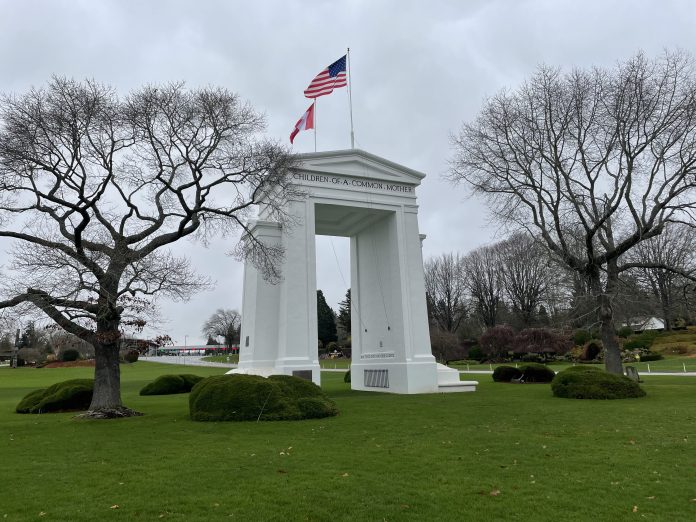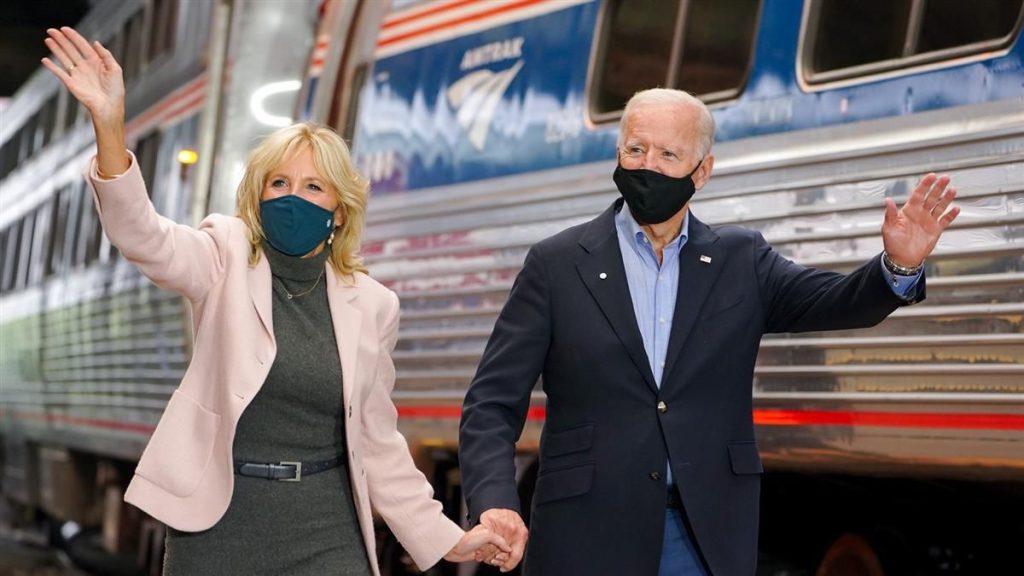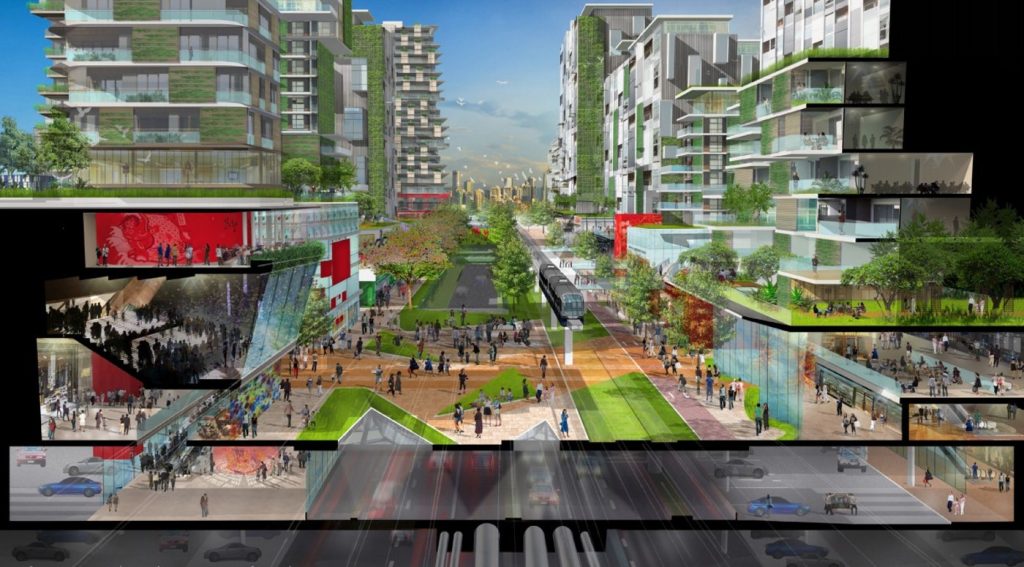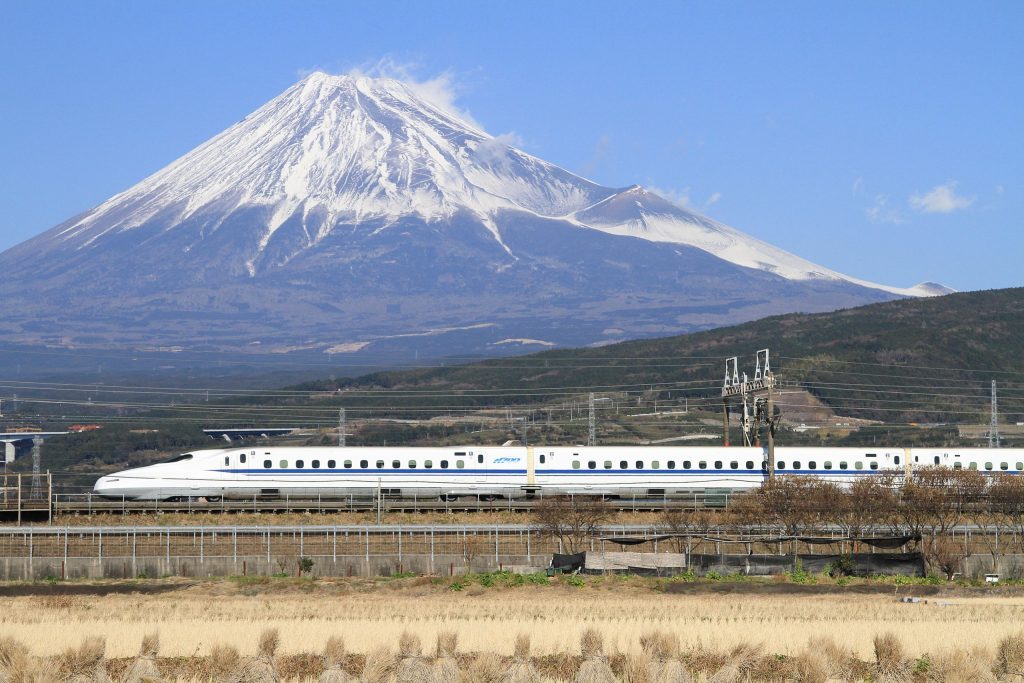
I want to do an even handed and dutiful reporting job about the 2021 Cascadia Innovation Corridor conference. But I’m in an downtown Vancouver hotel with my second negative Covid test of the week and a television talking about catastrophic flooding that’s cut the city off from (checks notes) Canada. Nothing will ever be even handed or dutiful ever again. Conferences promoting big ideas have to address whether their ideas are big enough this moment. CIC2021 tried, but missed.
For two days the conference discussed issues and cooperation across the the Cascadia supernational region. CIC brings together universities, businesses, and governments from British Columbia, Washington and Oregon with the goals of creating opportunity and prosperity across the megaregion. Over the last few years the Innovation Corridor has championed high speed rail and alliances between research groups.
The Urbanist has followed the work of the Cascadia Innovation Corridor for several years. We’ve reported their reports, cheered some ideas, and questioned others. What’s different this time is that the conference occurred looking up at a pandemic fifth wave and inside the eye of a swirling, climate change-fueled weather event. The deluge from all sides to add gravity to the festivities.
In Person Conferencing!
The 2021 Cascadia Innovation Conference kicked off with some success. This year’s conference included the announcement of a framework between British Columbia’s Premier John Horgan, Washington’s Governor Jay Inslee, and Oregon’s Governor Kate Brown to start developing a governance structure for ultra high speed ground transportation. This is the next step after the idea received favorable business case review and public opinion survey.
The meeting was hosted by Christine Gregoire and Greg D’Avgnion. As the former governor of Washington and the head of the B.C. Business Council respectively, they brought the appropriate heavy hitters. Brad Smith, President of Microsoft, gave the opening keynote. Secretary of Energy Jennifer Grahnolm called in from D.C. as the closing plenary speaker and touted the infrastructure bill President Biden recently signed and its promised climate-focused followup Build Back Better Act. Between them were speakers representing the leaders of first nations, universities, startups talking to regional activists, elected officials, and folks in businesses that rely on a connected border. And a bald weirdo here for the beer.
Highlights of the conversations included: Thomas Davidoff of the University of British Columbia talking about how much money US cities are leaving on the table because they are not allowed to charge exactions for density. Christopher Sands, Director of Canada Institute at the Wilson Center, talked about lessons learned from a year long and erratic border closure. Aria Hahn, CEO of Koonkie, talking about the ways microbes were being tested to prospect for natural resources or devour pollutants. Kim Baird, Chancellor of Kwantlen Polytechnic University, and Brian Cladoosby, Swinish Indian Tribal Community, talking honestly about how both countries have failed First Nations, the gaps in reconciliation, and the primacy of education.
Honestly, the joy of just talking with humans in person cannot be overstated. The random serendipity of being sat between a particle physicist and provincial liaison is something that reminds us how much we’ve missed over the last 20 months.
Contrastingly, I’ll now pick on Eric Sparks of Boston Consulting Group who talked about the CIC’s Vision 2050 Plan. Vision 2050 proposes densifying existing downtowns and centers to absorb 2.5 million new Cascadia residents over the next 30 years. But projections see an additional 1 to 1.5 million people arriving. To accommodate them, the plan adds a series of 100,000-person “Hub Cities” to the region. They would be located on underdeveloped land 30 to 50 miles outside of existing urban centers, but arranged along a high speed rail corridor through Cascadia. Sparks actually brought up the “political infeasibility” of converting single family units to multifamily as a justification for these Hub Cities by suggesting it would take bulldozing 325,000 homes to accommodate the expected population. We’re going to call shenanigans because the timeframe he’s looking at is 30 years across a region with 6.7 million housing units. That’s less than a 2% replacement rate. He presented less data, and more a polemic scare tactic against improving zoning.
Cascades, large and larger.
Here is where I’m running into problems digesting this meeting. The conference, the Innovation Corridor, and the participants feature the unlikely marriage between a hearty embrace of technology, deeply progressive reflection on Who We Are in Cascadia, and exceedingly traditional retail politics. It’s a vision of a cooperative future set in a corporate and governance ecosystem that requires selfishness. Equity touted by people who started at COP26 and stopped in six other countries over the last week to get here. It is an embrace of artificial intelligence and data mining that reinforces averages, yet purports to celebrate diversity and intrinsic human value. Telecom and tech companies being asked to disrupt themselves. It is demanding consensus to support an outlier idea. Dissonance on the level of planets bursting into flames.

This was brought into starkest relief by the concurrent natural disaster happening around Vancouver, and it couldn’t be more fitting. Record setting weekend rains collapsed hillsides that were laid bare by record setting fires that followed this summer’s record setting heat. Officials at the meeting gave updates on the emergencies and many attendees were blocked from getting to the conference in the first place.
Emergencies show the weak spot in every connected system. When those weak spots then break, it adds additional stress leading to further systems failing. The rolling failures become an event of their own, called a cascade. It wasn’t the earthquake or the tsunami, but the extended loss of power that resulted in Fukushima Daiichi nuclear disaster. It wasn’t the cheap concrete or the natural gas explosion, but the collapse of the Deepwater Horizon that depressurized the pipe and released millions of gallons of oil into the Gulf. In neither place, however, could the end result have come without the cascading events leading up to them.
Cascadia is seeing cascading failures in natural disasters and daily life. The region’s inability to address congestion and housing puts thousands sleeping unsheltered and millions stuck in their soot spewing cars commuting to homes they still can’t afford. Weaponized property taxes allow jurisdictions to gobble up huge tracts of land by annexation, then to let them lie fallow under single family zoning because the town can’t afford to build sidewalks or run transit. Smug liberal sanctimony allows many to feel that they do plenty just by living here, thank you, so let’s have a reactionary electoral backlash. And then the choking wildfire smoke.
There is no level of response (or outrage, or despair) that adequately meets the current moment. Though combined for hundreds of deaths, this year’s cascading natural catastrophes are possibly the gentlest outcome that could be imagined between heat, fire, and now floods. Horrifyingly, in the future, they are going to mark a good year. Just like 2020 saw a half million deaths due to massive public health incompetence, this is the best it’s going to be for quite a while. And it’s awful and spurs us to try SOMETHING.
Disruption, not disruptive.
So, what if we understand Vision 2050’s Hub Cities as a “do something, anything” option in the face of rolling, perpetual catastrophe? The idea may offer a framework for something better than we got. Their three components — build a lot of housing, connected by fast surface transit, 30-50 miles outside urban cores — hit like 66% on the solution scale. Housing really good. Transit really good. Underdeveloped areas 30-60 miles outside of urban cores are some that flood or catch on fire. So that last part of going outside the existing cities is what we need to break apart.

There are two ways of understanding the need to be outside of existing centers. Generously, Hub Cities can be described as land speculation. Congress came up with the idea 160 years ago to build railroads. Ebenezer Howard did it again 120 years ago. James Rouse did it poorly 50 years ago. Running infrastructure to a new town and using the development to pay for the extended line is not a new idea. But it’s an indication of the need for land-scale money. Not pennies-a-day operations money, but the scale of funds that can only come from increasingly valuable real estate. Perhaps because it’s not coming from somewhere else.
On the critical side, Hub Cities can be described as sprawling to escape heavy handed local control. We don’t like how long zoning takes, so this land outside your control looks very nice. This also is not a new idea, having been attempted by Industrial Revolution company towns, repeated by jurisdictions like Shoreline in 1995 to avoid annexation by Seattle, and floated most recently in Nevada by crypto companies. It’s also regularly tried inside jurisdictions through Public Development Authorities, to mixed results.
Understanding these together with acknowledging who sponsors the Cascadia Innovation Corridor helps understand Hub Cities as a tech-world vision of disrupting governance and property taxes. Such an understanding is advanced by the Memorandum of Understanding (MOU) signed by the three executives this week. It doesn’t talk about high speed rail. It talks about “ultra-high speed ground transportation.” That departure, according to Paula Hammond, of engineering firm WSP and co-chair of the Cascadia Innovation Corridor, was made so as not to “select a winning technology.” That reads as if nonsense vaporware like Hyperloop is still on the table. Cascadia innovation is chasing shiny things in the face of cascading global failure. I want to cheer on the future. This ain’t it. There’s the despair.

I try very hard to end conferences and articles on a slightly optimistic note. It’s really hard this time. Also, I’m a firm believer in Clarke’s First Law, which states, “When a distinguished but elderly scientist states that something is possible, he is almost certainly right. When he states that something is impossible, he is very probably wrong.” I don’t want to be the crotchety geezer yelling at (thickening, choking) clouds shooting down ideas just because they’re new.
The problem is that I’m not hearing really new, innovative ideas from the Cascadia Innovation Corridor. So this distinguished but ridiculous writer is not shooting them down because they’re impossible. I’m shooting them down because they’ve been tried and gave us the disastrous outcomes we are now trying to correct.
So, in lieu of optimism, let me offer a few things that are possible. It is very possible to take the good parts of Hub Cities – housing and transit – and do them immediately and repeatedly close to downtowns. It is very possible to build a train track instead of widen a highway. It is very possible to add extra units to a home. It is very possible open a store next to any house. It is very possible to pay taxes.
And if we do those things, it may be possible to breathe come 2050.
Ray Dubicki is a stay-at-home dad and parent-on-call for taking care of general school and neighborhood tasks around Ballard. This lets him see how urbanism works (or doesn’t) during the hours most people are locked in their office. He is an attorney and urbanist by training, with soup-to-nuts planning experience from code enforcement to university development to writing zoning ordinances. He enjoys using PowerPoint, but only because it’s no longer a weekly obligation.

